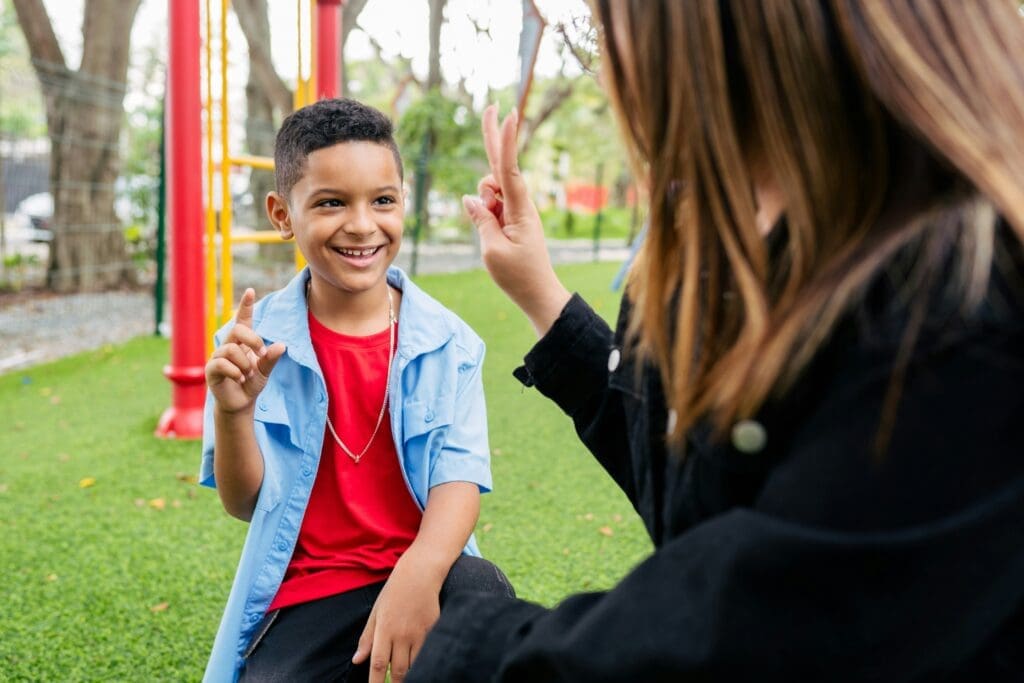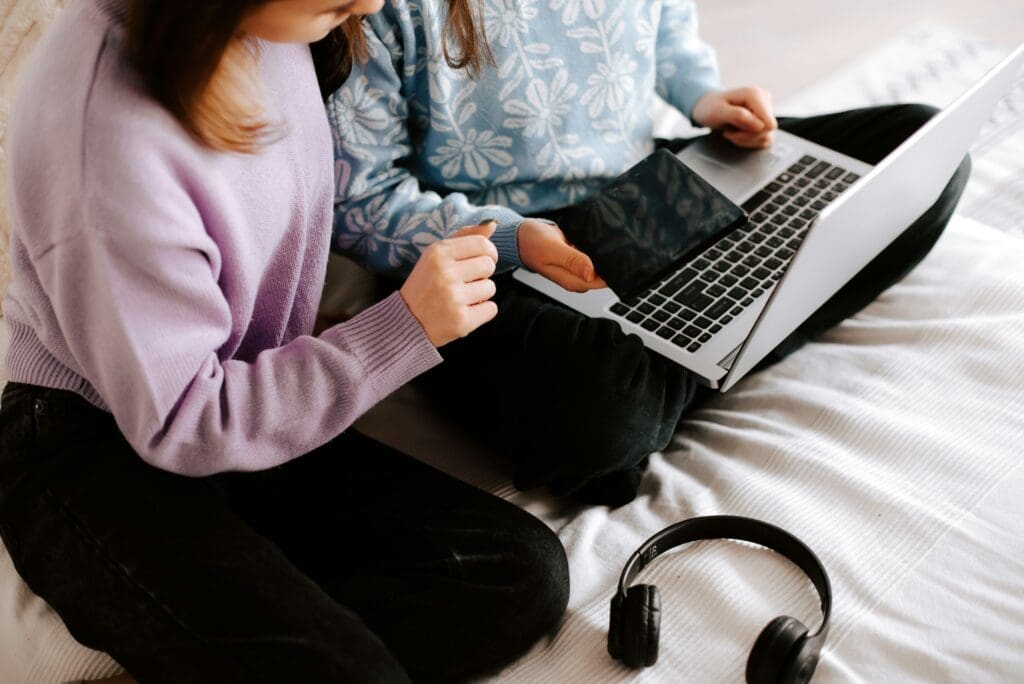How do we protect disabled young people from abuse and exploitation in digital spaces?

May 2025
Experts share lived experience and research in latest webinar for Alliance members
WeProtect Global Alliance members joined our latest webinar to explore the critical topic of protecting disabled children and young people from exploitation and abuse online.
Alarmingly, children and young people with a disability are 3-4 times more likely to experience physical and sexual violence than peers without disabilities.1
Debra Clelland, CEO of DeafKidz International, provided valuable context on the unique challenges faced by disabled children navigating online spaces, offering personal reflections on her experience as a mother of a deaf child and insights from her professional work in safeguarding deaf children.
Debra reminded participants to consider that every child who is deaf or disabled has a unique set of circumstances and experience, including different levels of access to support, education and resources. Within the category of deafness, the range of different accessibility needs is also vast, including people who are oral deaf, people who speak and have amplification devices, people who are culturally Deaf who use sign language as their first language, and as Debra highlighted, there are many different sign languages all over the world.
Debra went on to focus on four key areas where deaf and disabled children face additional challenges and vulnerabilities:
- Communication barriers and lack of common language
- The concept of incidental learning, and how deaf and disabled children often miss out on these experiences.
- Emotional literacy and a lack understanding about relationships and social norms.
- The social stigma that disabled children face (which can often lead to isolation and low self-esteem).
With the scene well set, Debra introduced colleague Robin Swannack. Robyn is a second-generation deaf person in her family, a research assistant with the Social Research for Deaf with Deaf People group at the University of Manchester, a part-time project officer at Zebra Access and a PhD student at the Centre for Deaf Studies at the University of Witwatersrand in South Africa.
Robyn talked about the barriers faced by deaf children whose friends and families do not use sign language and are unable to communicate with them. She also spoke about the problem of late diagnosis due to newborn hearing tests not being routinely available in some countries unless individuals have access to private healthcare. By the time some children are diagnosed, they may have missed years of language development.
“Language from birth is a powerful protective factor for all children. It builds confidence. It allows you to develop emotional understanding“.
Robyn Swannack
She highlighted the dangers that can arise if a child cannot understand warnings, ask questions about their body, consent or safety, or have a safe space to tell anybody if something goes wrong, as well as vulnerabilities created where online safety infrastructure is not designed with deaf people in mind. She spoke about her own experience of videos without captions, safety campaigns not translated into sign language that is culturally and linguistically appropriate and helplines with no text or chat function.
Turning to the solutions to improve safety and accessibility, Robyn discussed the importance of co-creation with deaf adults, deaf youth and deaf parents in the design of online safety tools and highlighted areas of good practice.

Following this thought-provoking presentation, Eva Notté, Senior Technical Advisor at Terre des Hommes Netherlands took to the floor to share insights and learnings from two of the team’s research projects.
The first of these, the Safety for Children and their Rights Online Programme, involved qualitative research in Cambodia, Kenya, Nepal and the Philippines, exploring parents’ digital literacy, parenting norms and caregiver responses to online child sexual exploitation. The research included children with disabilities including cognitive disabilities like high functioning autism or Down syndrome.
The second project, Values, Opinions and Insights from Children and Caregivers about ESafety (VOICE) research was conducted in partnership with ECPAT International and Eurochild across 15 countries with focus groups and surveys.
Dr. Md. Ahsan Habib and Md. Shah Moazzem Hossain, two of the researchers from Terre des Hommes Netherlands involved in this work then presented on the methodology used for the research and the challenges and learnings from Bangladesh.
The research was mixed methods collecting quantitative and qualitative data and a snowball sampling technique was used. The study included children with disabilities or a neurodevelopmental disorder, visual impairment, or hearing impairment as well as autism, intellectual disabilities and Down syndrome.
Md. Shah Moazzem Hossain discussed the robust ethical considerations of the research and process including anonymity, confidentiality and safeguarding as well as inclusive communication.
Dr. Md. Ahsan Habib outlined some of the challenges of the project, such as many of the children and young people not possessing language and vocabulary around the topic of online safety, or their forms of communication not being understood by others.
Eva shared some early insights from the research, which shows both the positive and negative aspects that children with disabilities and their parents’ and caregivers experience online. Insights from the data and the methods are due to be published in a future report.
Eva pointed to three particular areas of good practice that can be drawn from the project, including: training for notetakers to include non-verbal communication; a range of activities for participants including visual activities; and safeguarding methods including a ‘skip’ option for participants.
Concluding the session, Eva shared her hope that the study will inspire others to learn from the project and conduct more much needed research with children with disabilities.
“Let’s step up our game to ensure that every child’s voice is heard.”
Eva Notté, Terre des Hommes Netherlands
A recording of the webinar is available for Alliance Members to watch on demand via the Member’s Hub. Log in to view here.
If you are interested in future Alliance webinars, please visit our events page for more details.
1. Prevalence and risk of violence against children with disabilities: a systematic review and meta-analysis of observational studies, Jones, Lisa et al. The Lancet, Volume 380, Issue 9845, 899 – 907
Page last updated on 28th May 2025